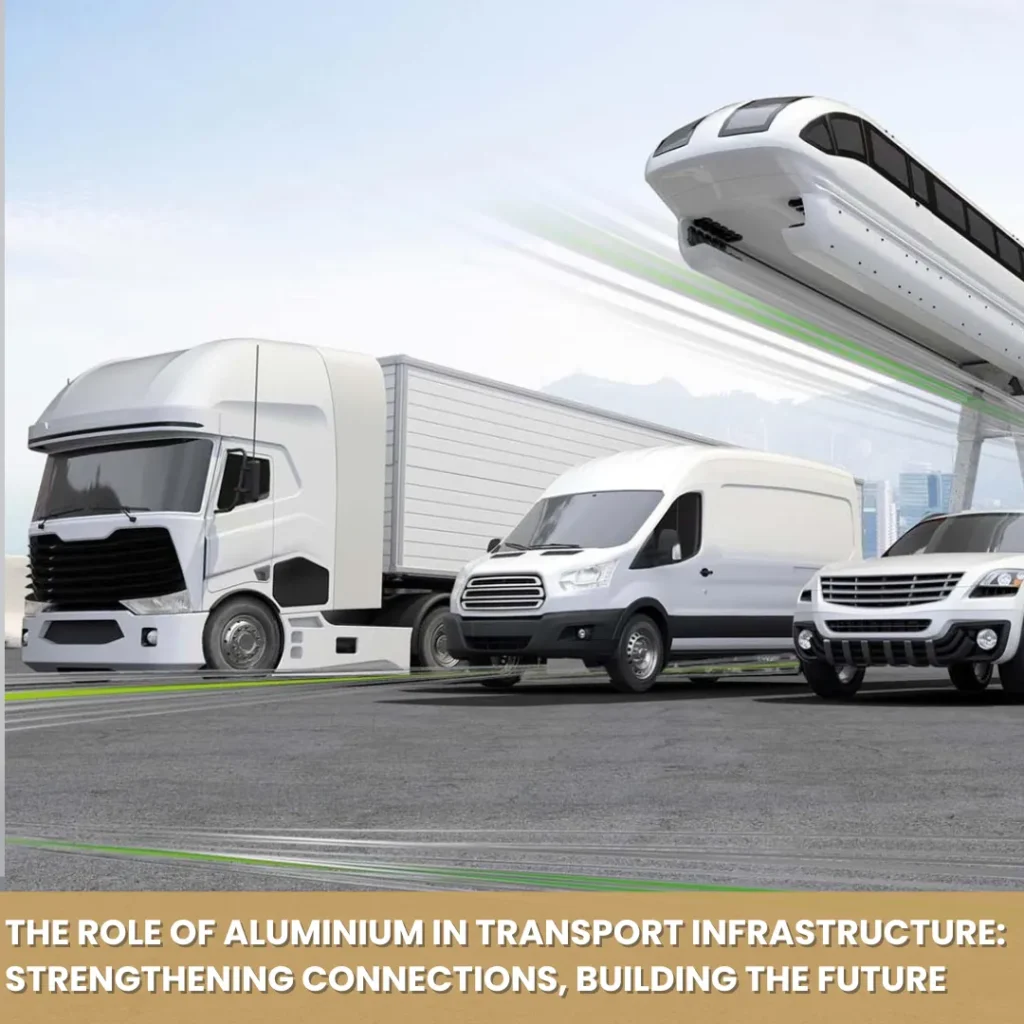
Transport infrastructure forms the veins and arteries of a country’s economic system. Whether it is bridges connecting cities, metro networks reducing urban congestion, airports enhancing connectivity, or ports enabling global trade—these structures require materials that are strong, durable, cost-effective, and sustainable.
In recent decades, aluminium has emerged as one of the most critical materials transforming how infrastructure is designed and built. Let’s explore why aluminium is changing the landscape of transport infrastructure across the world.
Why Aluminium? The Science Behind Its Popularity
Lightweight Yet Strong
Aluminium is only about one-third the weight of steel, yet it offers impressive strength-to-weight ratios. In infrastructure, weight reduction translates to:
- Lower structural load on foundations, pillars, and supporting beams.
- Longer spans and innovative designs, especially in bridges and flyovers.
- Easier transportation and installation of components, reducing crane, labour, and logistics costs.
Exceptional Corrosion Resistance
Steel often requires heavy coatings or frequent painting to protect against corrosion, especially in coastal or industrial environments. Aluminium, on the other hand, naturally forms a protective oxide layer that prevents rust, ensuring:
- Longer lifespan with minimal maintenance.
- Cost savings on repainting and corrosion protection treatments.
- Better performance in marine environments, humid climates, and areas with heavy pollution.
High Workability and Design Flexibility
Infrastructure projects demand materials that can be extruded, rolled, cut, bent, and formed into complex shapes. Aluminium’s excellent workability allows architects and engineers to:
- Create innovative and aesthetic designs without compromising structural integrity.
- Customise sizes and profiles to exact project needs.
- Achieve precision in assembly with prefabricated aluminium components.
Sustainability and Recyclability
As governments, contractors, and corporations prioritise sustainability, aluminium stands out:
- It is 100% recyclable without losing its mechanical properties.
- Recycling aluminium requires only 5% of the energy needed for primary production, significantly lowering carbon footprint.
- Its longevity reduces the environmental impact of replacements and repairs over the life of an infrastructure project.
Real-World Applications of Aluminium in Transport Infrastructure
Bridges and Flyovers
Aluminium is used extensively in modern bridges for:
- Decking panels: Lightweight panels reduce the load on supporting beams and foundations, enabling longer spans.
- Pedestrian walkways and footbridges: Aluminium’s corrosion resistance and light weight make it ideal for quick installations in urban areas.
- Handrails, parapets, and balustrades: Durable, maintenance-free components that remain strong and aesthetically appealing for decades.
Example: In Europe, aluminium deck panels have been used to renovate old steel bridges without increasing load, extending their lifespan economically.
Railways and Metro Systems
Aluminium plays a vital role in rail infrastructure:
- Train body panels and interiors: Reduced weight enables higher speeds, better fuel efficiency, and increased passenger load.
- Overhead electrification systems: Aluminium conductors with steel reinforcement offer better conductivity-to-weight ratios, ensuring efficient energy distribution.
- Station structures, roofing, and facades: Aluminium adds aesthetic value while withstanding weather and pollution.
Did you know? High-speed trains and metros in Japan and Europe extensively use aluminium for reduced energy consumption and track wear.
Road Transport Infrastructure
In highways and urban roads, aluminium is used for:
- Signage gantries and boards: Easy to install and resistant to corrosion, reducing maintenance frequency.
- Crash barriers and safety rails: Aluminium barriers absorb impact effectively while remaining rust-free for years.
- Street light poles and lamp posts: Lightweight poles are safer in collisions and easier to handle during installation or relocation.
Airports and Aviation Infrastructure
Airports utilise aluminium in:
- Terminal roofing and facade systems: Sleek designs with minimal maintenance requirements.
- Passenger boarding bridges and walkways: Lightweight and durable, facilitating easier operations and longevity.
- Baggage handling systems: Aluminium’s durability and corrosion resistance ensure smooth logistics with minimal downtime.
Ports and Marine Infrastructure
In ports and coastal areas, aluminium is ideal for:
- Dock structures, gangways, and marine walkways: Corrosion resistance ensures long life despite constant saltwater exposure.
- Storage warehouses and roofing systems: Lightweight and strong, aluminium sheets offer thermal insulation and weather protection.
How Metalco Supports Transport Infrastructure Development
At Metalco Extrusions Global LLP, we are proud to be one of India’s leading suppliers of high-grade aluminium sheets, plates, extrusions, and customised profiles for infrastructure projects across sectors.
Our Advantages:
- Wide Range of Alloys and Grades: From 1100 to 7075, tailored to each application.
- Certified Quality Standards: Complying with ASTM, EN, IS, and aerospace standards for critical applications.
- Custom Processing and Cutting Solutions: Precise, project-ready materials to reduce on-site fabrication time.
- Large Inventory and Rapid Delivery: Ensuring urgent timelines are met without compromising quality.
- Expert Guidance: Our team assists engineers, consultants, and contractors in selecting the right aluminium alloy based on load, corrosion, and environmental requirements.
The Future of Transport Infrastructure with Aluminium
Urbanisation, electrification of transport, and sustainability goals are driving the demand for lighter, stronger, and greener infrastructure. Aluminium sheets at the heart of this transformation, enabling:
- Innovative bridge and flyover designs
- Efficient and eco-friendly railway and metro systems
- Smart roads with durable, maintenance-free components
- Sustainable airports and ports to handle increasing global trade
Partner with Metalco to Build Tomorrow’s Infrastructure
At Metalco, aluminium is not just a metal; it is the foundation for engineering excellence, design innovation, and sustainable growth.
Are you planning a transport infrastructure project?
Let us support you with world-class aluminium solutions.
Contact our team today for technical consultation, quotations, and grade recommendations tailored to your project needs.
Frequently Asked Questions
Aluminium’s lightweight nature leads to reduced fuel consumption and lower greenhouse gas emissions in vehicles. Additionally, it is 100% recyclable, requiring only 5% of the energy needed for primary production, thus supporting a circular economy.
While the initial material cost of aluminium can be higher than some alternatives, its durability and low maintenance requirements often result in long-term cost savings. Additionally, its recyclability can offset initial expenses over time.
Yes. Aluminium alloys are resistant to corrosion, snow, rain, and UV exposure. This makes them suitable for outdoor infrastructure such as bridges, train stations, and airport structures, even in harsh climates.

